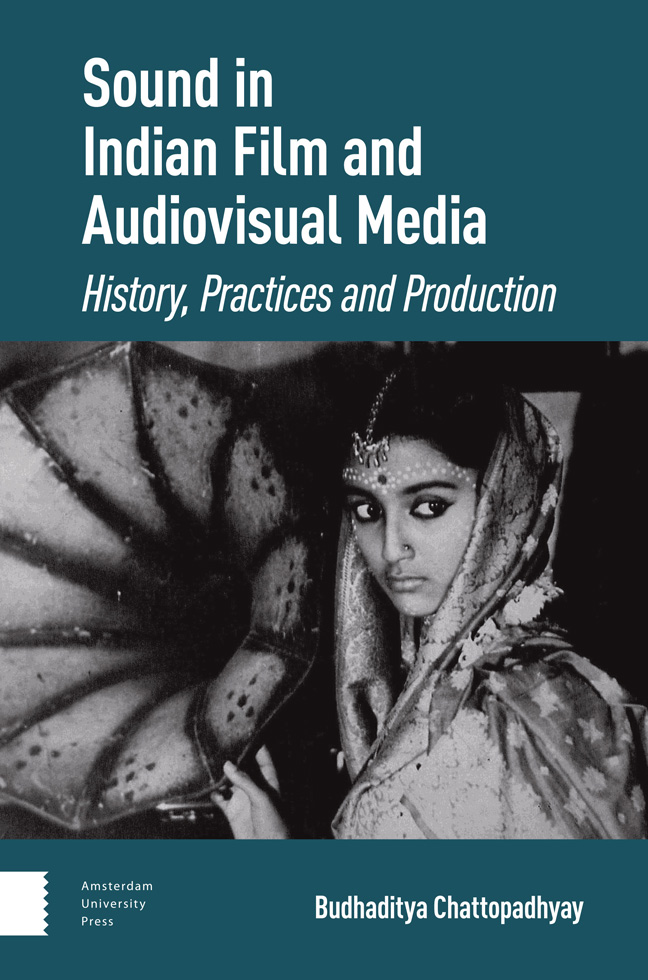Book contents
- Frontmatter
- Contents
- Acknowledgements
- 1 Introduction
- 2 The Technological Frameworks
- 3 Direct Sound and Early Talkies
- 4 Sound of the Golden Age
- 5 Tracing the Sound in Satyajit Ray’s Film-works
- 6 Popular Films from the Dubbing Era
- 7 Parallel Sounds, Radical Listening – Part I
- 8 Sholay, Stereo Sound and the Auditory Spectacle
- 9 The Advent of Digital Sync Sound
- 10 The Surround Revolution
- 11 Sound in the Audiovisual Media Arts
- 12 Parallel Sounds, Radical Listening – Part II
- 13 A Concluding Voiceover
- Bibliography
- Filmography
- Index
7 - Parallel Sounds, Radical Listening – Part I
Published online by Cambridge University Press: 20 February 2024
- Frontmatter
- Contents
- Acknowledgements
- 1 Introduction
- 2 The Technological Frameworks
- 3 Direct Sound and Early Talkies
- 4 Sound of the Golden Age
- 5 Tracing the Sound in Satyajit Ray’s Film-works
- 6 Popular Films from the Dubbing Era
- 7 Parallel Sounds, Radical Listening – Part I
- 8 Sholay, Stereo Sound and the Auditory Spectacle
- 9 The Advent of Digital Sync Sound
- 10 The Surround Revolution
- 11 Sound in the Audiovisual Media Arts
- 12 Parallel Sounds, Radical Listening – Part II
- 13 A Concluding Voiceover
- Bibliography
- Filmography
- Index
Summary
Abstract: In the seventh chapter, I discuss the sound practices and sonic aesthesis emerging from the various strands of ‘Indian New Wave’. Also known as Parallel Cinema, or arthouse cinema, this stream of films produced predominantly from the 1960s to the early 1980s, largely supported by the state, identifying with experimentation, certain aesthetic sensibilities, socio-political awareness, and innovative styles and techniques, was distinct from the commercial mainstream. Focusing on the works of pioneering auteurs such as Mrinal Sen, Ritwik Ghatak, Mani Kaul, Shyam Benegal, Adoor Gopalakrishnan, G. Aravindan, Kumar Shahani among others, this chapter shows how the use of sound from this era was a departure from that of the Golden Age. Sound began taking a central, creative role in film narrative.
Keywords: Indian New Wave, Parallel Cinema, arthouse cinema, alternative film movement
Sound after Ray
Indian cinema arguably touched modernity when the sound of a train gradually invaded the pastoral landscape in Satyajit Ray’s Pather Panchali (1955). In this moment, the two protagonists, brother and sister Apu and Durga, lose their sense of orientation in a field on the edge of their village. The sound of the train, a new-fangled sonic intervention, destabilizes their sense of the everyday, bridging the previously uncrossed divide between a rural environment and the big city via a sound stage. The sound also transcends a formulaic period of Indian cinema, then known for its gargantuan output with arguably little substance. The film hints at the possibility of Indian cinema’s future directions, inspiring generations of filmmakers towards an alternative and independent cinematic style, subverting the mainstream.
As shown in previous chapters, the 1950s and 1960s are considered the Golden Age of Indian cinema, when film auteurs such as Ray, Chetan Anand, and Guru Dutt emerged, putting Indian cinema on the international stage. At the same time, younger generations of filmmakers were initiating a new Indian independent cinema that assimilated wider influences, including European cinema, Indian folk, and vernacular cultures, drawing often from local myth and ritual practices.
The use of sound in these Indian New Wave films was a departure from their Golden Age predecessors. It began taking a central, creative role in the narrative. As we learn from interviews with Indian sound practitioners, this was the time when sound production was evolving due to early technical advances. For example, audio effects such as reverb, EQ, compression, limiting, and echo were developed at this time.
- Type
- Chapter
- Information
- Sound in Indian Film and Audiovisual MediaHistory, Practices and Production, pp. 123 - 142Publisher: Amsterdam University PressPrint publication year: 2023



